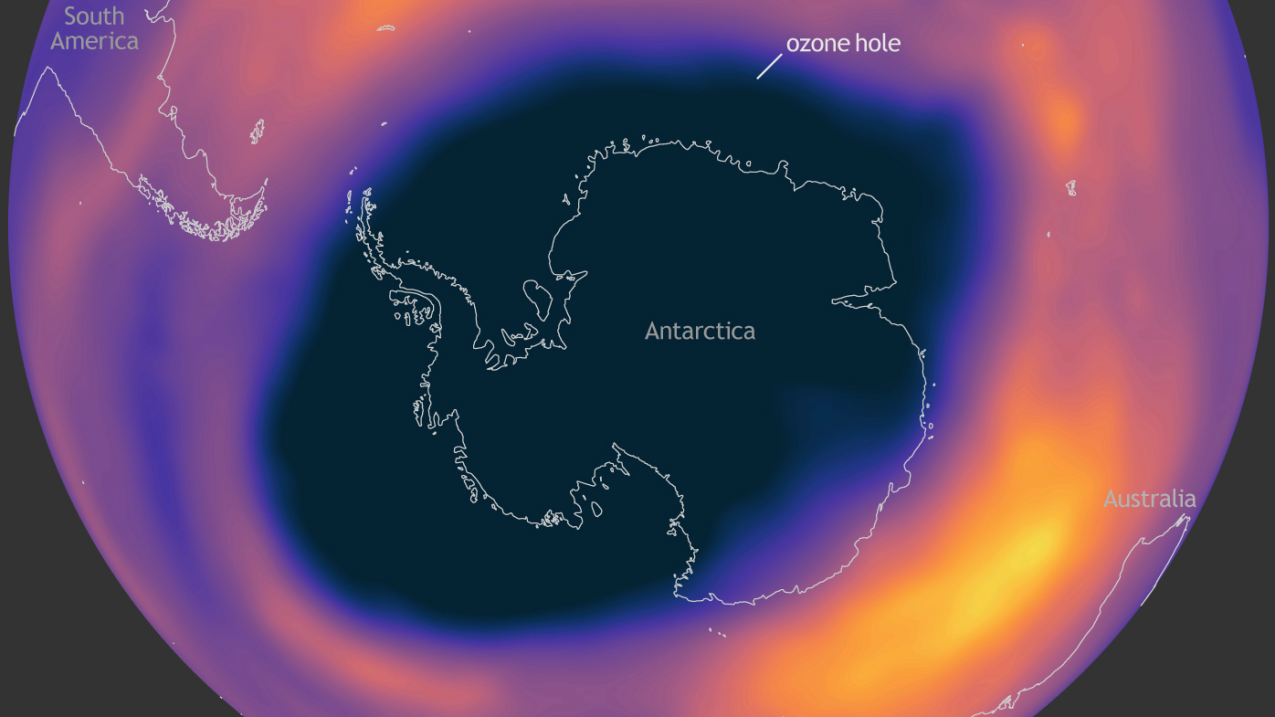
This image shows ozone concentration over Antarctica on October 7, 2021. In late October 2021, NOAA and NASA scientists reported that the ozone hole that develops in the stratosphere over Antarctica every spring was larger and deeper than average in 2021 thanks to a colder-than-average winter. But there was also good news: the hole in our planet’s UV-blocking ozone layer was smaller than those of the 1990s and 2000s and also smaller than it would have been without the Montreal Protocol—the international treaty to stop the production of ozone-destroying chemicals called CFCs, short for chloroflourocarbons. Note: To allow comparisons from year to year, experts define the "ozone hole" as the area in which total column ozone levels are below 220 Dobson Units (dark blue, marked with black triangle on color bar). Download the full image at: www.climate.gov/media/13837 (Image credit: NOAA Climate.gov image based on TOAST data from the NOAA Environmental Visualization Lab. )


